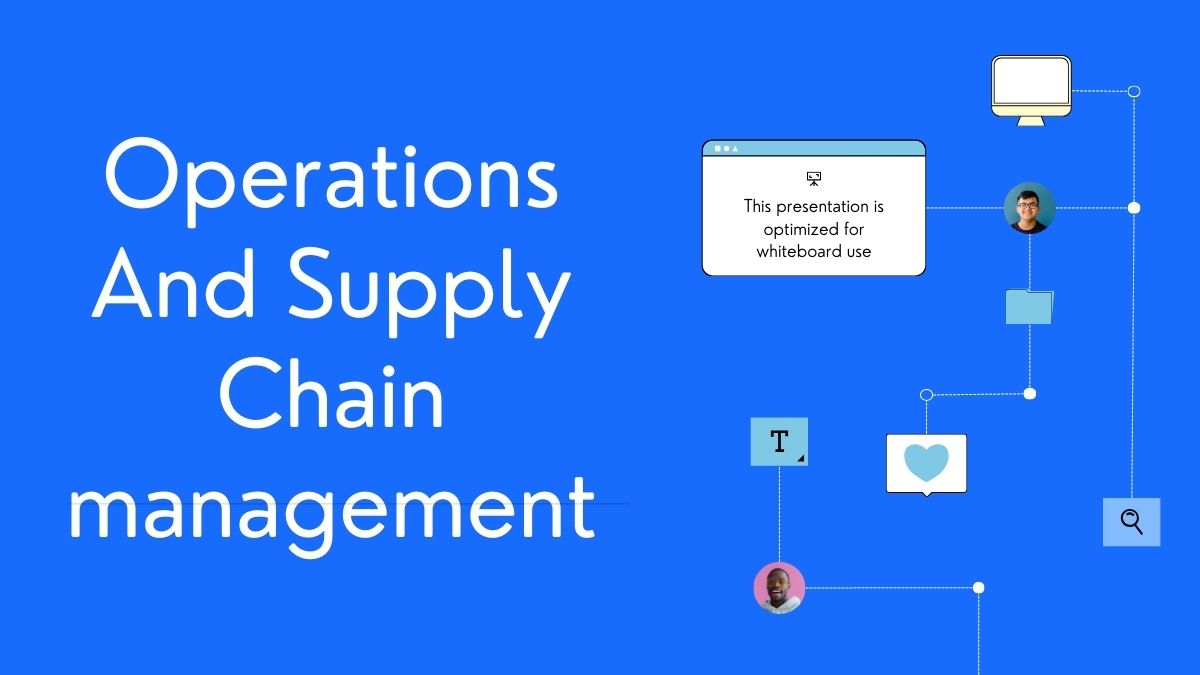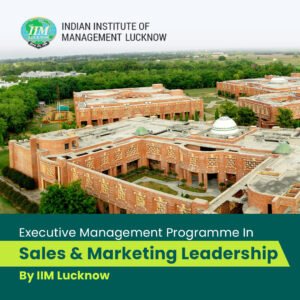The economic landscape is in flux. Rising inflation, interest rate hikes, and geopolitical tensions are creating a climate of uncertainty for businesses of all sizes. Profit margins are shrinking, consumer confidence is waning, and navigating this complex environment requires more than just weathering the storm. It demands proactive leadership and strategic planning from CEOs who can guide their organisations towards resilience and even growth.
We explore some essential strategies CEOs need to implement to navigate economic downturns in this article. From assessing your business readiness to fostering a culture of resilience within your workforce, this CEO strategies guide will equip you with the knowledge and actionable steps to not only survive but also thrive during uncertain times.
Economic downturns can be daunting, but they also present opportunities for innovation and market differentiation. By embracing proactive leadership and a strategic approach, CEOs can steer their companies through these challenges and emerge stronger on the other side. Let us learn more.
Assessing Your Business Readiness: A Self-Audit for Economic Uncertainty
Before strategising for uncertain economic waters, a thorough self-assessment is critical. It is like taking your car to the mechanic before a long road trip. By identifying potential weak spots, you can make necessary adjustments and ensure your business is in top shape to handle economic turbulence.
Here’s a framework to evaluate your business readiness:
- Financial Health: Scrutinise your cash flow. How readily can you access funds to cover operating expenses during a downturn? Analyse your debt-to-equity ratio. Are you overly reliant on credit, making you vulnerable to rising interest rates? Examine your profit margins. Are they healthy enough to withstand potential dips in revenue?
- Operational Efficiency: Identify areas of operational waste. Are there inefficiencies in your production process, administrative functions, or marketing efforts? Streamlining operations can free up resources to weather downturns. Evaluate your supply chain. Are you overly reliant on a single source for materials? Can you diversify your suppliers to mitigate disruptions?
- Market Position: Analyse your customer base. How concentrated is it? Are you heavily reliant on a single industry or customer segment? Diversifying your customer base can provide a safety net if one sector weakens. Assess your competitive landscape. How well-positioned are you against your rivals? Are you offering unique value propositions that will continue to resonate with customers during economic downturns?
Beyond these questions, consider stress testing your business. This involves simulating different economic scenarios (e.g., recessionary conditions, rising inflation) and analysing how your business would fare under such pressures. Stress testing helps identify potential vulnerabilities and allows you to develop contingency plans to mitigate them.
By conducting a comprehensive self-assessment and stress testing, you gain valuable insights into your business’s resilience. This knowledge forms the foundation for developing robust CEO strategies to navigate economic uncertainty.
Crafting a Resilient Business Model for Uncertain Times
The economic storm clouds may be gathering, but there’s no need to hunker down and wait for the worst. By proactively building a resilient business model, you can transform your company from a vulnerable sailboat into a sturdy ocean liner, capable of navigating turbulent economic waters. A preventive model is always one of the top CEO strategies out there. Here is how you can build this model:
-
Embrace Diversification
Do not put all your eggs in one basket. Diversify your product lines to cater to a wider range of customer needs and market segments. Explore opportunities to expand into new markets, both geographically and demographically. Develop multiple revenue streams to reduce dependence on a single source of income. This could involve offering subscription services, consulting services alongside product sales, or exploring new distribution channels.
-
Scenario Planning
Charting your probable courses is essential as economic downturns come in different flavours such as recessions, inflation spikes and industry-specific slumps. Scenario planning allows you to anticipate these possibilities and develop contingency plans for each. Identify potential economic threats and their impact on your business. For example, a recession might lead to decreased consumer spending. Develop a plan to address this, such as offering more budget-friendly product options or increasing marketing efforts to reach new customer segments.
2. Building Flexibility With Optimised Supply Chains
Your supply chain is the lifeblood of your business. Economic disruptions can lead to supply shortages and price increases. To mitigate these risks, consider diversifying your supplier base to avoid dependence on any single source. Invest in building strong relationships with your key suppliers. Communicate openly and negotiate flexible contracts that can adapt to changing economic conditions. Additionally, explore opportunities to near-source your materials or implement just-in-time inventory management practices to minimise disruption risks.
How Companies Pivoted Through Economic Downturns
Building a resilient business model is not just theoretical. Here are real-world examples of companies that successfully navigated economic downturns by adapting their CEO strategies:
- Disney’s Streaming Pivot (2008 Recession): With movie theatre attendance declining during the 2008 recession, Disney recognised the growing popularity of streaming services. They launched Disney+, a subscription-based streaming platform, in 2019. This strategic diversification into the streaming market provided a new revenue stream that helped offset challenges in the traditional theatrical release model.
- Dollar Shave Club’s Direct-to-Consumer Disruption (2008 Recession): Faced with a saturated market for razors dominated by established brands, Dollar Shave Club adopted a lean manufacturing approach and a direct-to-consumer model. This strategy reduced overhead costs and offered consumers a more affordable product, leading to rapid growth despite the recession. A Harvard Business School Study [invalid URL removed] found that Dollar Shave Club’s direct-to-consumer model disrupted the traditional razor market by offering 70% cost savings to consumers.
Data-Driven Insights on Effective CEO Strategies
A McKinsey & Company report found that companies with diversified revenue streams experience less volatility in earnings during economic downturns. Companies with a higher degree of diversification saw their earnings decline by an average of 13% during recessions compared to a 23% decline for companies with less diversification.
Many studies have found that companies that embraced lean manufacturing principles during economic downturns were able to weather financial hardship better than their competitors. Lean manufacturing focuses on eliminating waste and optimising processes, leading to cost reductions and improved cash flow which are critical factors during economic uncertainty.
By following these examples and data-driven insights, you can build a more resilient business model that can adapt and thrive even during economic downturns. Remember, the key is to be proactive, embrace change, and prioritise CEO strategies that strengthen your ability to weather any economic storm.
Financial Prudence: One of the Best CEO Strategies
Economic downturns test a company’s financial mettle. During these times, prioritising financial discipline and cost optimisation becomes paramount. Here’s how to navigate this crucial aspect of navigating uncertainty:
Cash is King (Maintaining Cash Flow)
Cash flow is the lifeblood of your business. Here are some top CEO strategies to ensure a steady stream:
- Extend Payment Terms: Negotiate longer payment terms with vendors without impacting your creditworthiness. This frees up cash in the short term, allowing you to invest in strategic areas.
- Become a Master Negotiator: Renegotiate contracts with suppliers and service providers to secure better deals. Every discount counts when cash flow is tight.
- Embrace Automation: Implement cost-saving technologies like automated accounting software or inventory management systems to streamline operations and reduce reliance on manual processes.
Cost-Cutting without Compromise
Saving money does not have to mean sacrificing quality or employee morale. Utilise these useful CEO strategies:
- Review Operational Inefficiencies: Identify areas where resources are wasted. Streamline processes to eliminate unnecessary expenses without impacting productivity.
- Renegotiate Contracts: Review existing contracts for services like rent, utilities, and insurance. Explore opportunities to renegotiate lower rates or explore alternative providers.
- Invest in Efficiency-Enhancing Technologies: Invest in technologies that optimise resource utilisation. For example, energy-efficient equipment can reduce utility costs in the long run.
Building a Cash Reserve
Maintaining a healthy cash reserve is critical during economic uncertainty. Aim to build a reserve that can cover operating expenses for a specific period (ideally 3-6 months) to weather potential downturns. This buffer provides breathing room to make strategic adjustments without resorting to drastic measures.
Exploring Alternative Financing Options
If necessary, consider alternative financing options like lines of credit or government assistance programs designed to support businesses during economic hardship. However, prioritise using these options strategically, ensuring the debt burden can be managed in the long term.
Case Study: The Cash Flow Lifeline
During the 2008 recession, clothing retailer J.Crew implemented creative solutions to manage cash flow. They negotiated extended payment terms with suppliers, offered early payment discounts to incentivise faster customer payments, and renegotiated leases on underperforming stores. These measures helped J.Crew maintain a healthy cash flow and navigate the economic downturn effectively.
By adopting a financially prudent approach, you can ensure your company has the resources to weather economic storms. Remember, proactive cash flow management, strategic cost-cutting, and building a financial safety net are critical elements of navigating economic uncertainty with a strong financial position. If you wish to become a successful strategic CEO, you can enrol in a holistic CEO course for executives and working professionals.
Leading with Transparency: CEO Communication Strategy
Economic uncertainty can breed anxiety and confusion. As a CEO, your voice becomes a beacon of clarity and direction during these challenging times. Clear and consistent communication with your employees, stakeholders, and the public is essential for maintaining trust, motivation, and stability. This clear communication becomes one of the best CEO strategies out there in the long run.
Keeping Your Employees Informed and Engaged
- Embrace Transparency: Even when delivering difficult news about budget cuts or potential layoffs, transparency is key. Sugarcoating the situation erodes trust. Provide honest explanations about the economic challenges and your company’s response plan.
- Open Communication Channels: Hold regular town hall meetings or virtual forums to address employee concerns and answer questions openly. Encourage a two-way dialogue to foster a sense of collaboration and shared responsibility.
- Focus on the Positive: Highlight the company’s strengths and commitment to weathering the storm. Share success stories and ongoing efforts to adapt and innovate. This fosters optimism and keeps employees motivated.
The “Three Cs” of an Effective CEO Communication Strategy:
- Clarity: Communicate the message in simple, easy-to-understand language. Avoid jargon or technical terms that might confuse employees.
- Compassion: Acknowledge the challenges and anxieties employees might be facing. Demonstrate empathy and understanding.
- Conviction: Project confidence in your leadership and the company’s future. Outline a clear plan for navigating the economic downturn and inspire employees to contribute to the company’s success.
Real-World Examples of Effective CEO Communication Strategy
During the 2008 recession, the CEO of Southwest Airlines, Gary Kelly, implemented a series of town hall meetings to address employee concerns. He openly discussed the economic challenges and potential impact on the company but also emphasised Southwest’s strong financial position and commitment to its employees. These open and honest communication efforts helped maintain employee morale and company loyalty during a difficult economic period.
Open Communication with Stakeholders
The importance of clear communication extends beyond your employees. Regularly update investors, suppliers, and customers about your company’s response to economic uncertainty. Share your revised business plans and any potential changes that might impact them. By maintaining open communication, you build trust and confidence with all stakeholders, ensuring a more collaborative approach to navigating economic challenges.
Investing in Your Workforce: Your Most Valuable Asset During Uncertainty
Economic downturns can tempt CEOs to focus solely on cost-cutting measures. However, a skilled and motivated workforce is your greatest asset during challenging times. Here is why investing in your employees is crucial:
- Retention is Key: During economic downturns, employee turnover can be disruptive and costly. Prioritise retaining your top talent by fostering a positive work environment, offering competitive compensation and benefits, and recognising their contributions.
- Boosting Morale and Productivity: A happy and engaged workforce is more productive and resilient during uncertainty. Invest in employee well-being initiatives, celebrate achievements, and create a sense of purpose within the company.
- Upskilling for the Future: The economic landscape is constantly evolving. Invest in employee development programs to equip your workforce with the skills needed to adapt to changing market demands.
Innovative Employee Engagement CEO Strategies
- Mentorship Programs: Pair experienced employees with newer team members to foster knowledge sharing and career development.
- Internal Skill-Sharing Workshops: Encourage employees to share their expertise with colleagues through internal workshops on relevant skills.
- Gamification: Introduce gamified learning platforms to make upskilling and training more engaging and interactive.
Real-World Examples of Upskilling Success
During the 2009 recession, IBM implemented a comprehensive reskilling program for its employees. The program focused on emerging technologies like cloud computing and data analytics. This investment ensured IBM’s workforce possessed the necessary skills to capitalise on new market opportunities and navigate the changing economic landscape.
Benefits of Flexible Work Arrangements
Offering flexible work arrangements can enhance employee well-being, improve work-life balance, and potentially boost productivity. This can be particularly attractive during economic uncertainty when employees might be facing additional personal challenges.
CEO Exit Strategy
A CEO’s exit from a company can be a complex process with significant implications for both the CEO and the organisation. A well-defined CEO exit strategy helps ensure a smooth handover, minimises disruption, and positions the company for continued success. Here’s an overview of key considerations for CEOs planning their exit:
Types of Exits
- Retirement: The most common exit scenario, planned well in advance to allow for a smooth handover.
- Succession Planning: Identifying and grooming an internal successor ensures continuity and leadership stability.
- Acquisition/Merger: An exit strategy might involve selling the company or merging with another entity.
- Forced Departure: This can be due to various reasons, and the exit strategy aims to minimise the negative impact on the company.
Key Considerations
- Timeline: Ideally, a CEO exit strategy should be developed 3-5 years before the CEO’s planned departure. This allows ample time for succession planning or preparing the company for sale.
- Successor Identification: For internal succession, identify high-potential candidates early on and provide them with leadership development opportunities.
- Knowledge Transfer: Ensure the departing CEO effectively transfers institutional knowledge and critical information to the successor or leadership team.
- Communication Strategy: Openly communicate the CEO’s exit plan to employees, stakeholders, and investors to maintain trust and confidence.
Benefits of a Strong Exit Strategy
- Minimises Disruption: A smooth handover ensures business continuity and minimises operational disruptions.
- Maintains Employee Morale: Clear communication and a defined succession plan alleviate employee anxieties about the future of the company.
- Preserves Company Value: A well-managed exit protects the company’s reputation and value for investors and potential buyers.
Additional Components of a CEO exit strategy
- Board of Directors: Collaborate closely with your board to develop and implement your exit strategy.
- Professional Advisors: Seek guidance from legal and financial advisors specialising in CEO transitions.
Questions to Ask CEO About Strategy
Here are some of the top questions that board members, directors or shareholders ask their CEOs about their strategy.
Overall Business Strategy
- What are the company’s long-term strategic goals? How do these goals align with the current market landscape?
- How does the company plan to differentiate itself from competitors in the coming years?
- What are the biggest challenges and opportunities you see for the company in the current economic climate?
- How does the company plan to adapt its strategy in response to changing customer needs and technological advancements?
Financial Strategy
- What are the key financial metrics the company tracks to measure success?
- How does the company plan to allocate resources to achieve its strategic goals?
- What is the company’s approach to managing risk and ensuring financial stability during economic downturns?
- Are there any plans for mergers, acquisitions, or divestitures in the near future?
Growth Strategy
- How does the company plan to expand its market share and customer base?
- Are there any new markets or product lines the company is considering entering?
- What is the company’s approach to innovation, and how will it drive future growth?
- How does the company plan to attract and retain top talent to support its growth strategy?
People Strategy
- How does the company foster a culture of innovation and collaboration among its employees?
- What are the company’s priorities for employee development and training?
- How does the company plan to attract and retain top talent in a competitive market?
- What is the company’s approach to diversity, equity, and inclusion?
Wrapping Up
Economic downturns pose challenges, but they need not be insurmountable. By adopting the CEO strategies outlined in this guide, CEOs can lead their companies through these turbulent times with resilience and even emerge stronger.
Remember, economic downturns demand proactive leadership, adaptability, and a commitment to building a resilient business model. While challenges may lie ahead, they also present opportunities for innovation and market differentiation. By embracing these CEO strategies and leading with vision, you can guide your organisation not just through the storm but towards a brighter and more prosperous future.
If you wish to become an effective modern CEO who can guide any company to a safer position during uncertain times, enrol in the Executive Certificate Programme For
Strategic Chief Executive Officers by Imarticus Learning and IIM Raipur. This CEO course will teach you everything you need to become a successful strategic CEO.
Frequently Asked Questions
What is the most important thing for CEOs during economic uncertainty?
The most essential things for CEOs during uncertain times are proactive leadership and adaptability.
How can CEOs assess their business readiness?
Conduct a self-assessment focusing on financial health, operational efficiency, and market position.
What is one way to build a resilient business model?
You can diversify revenue streams (products, markets).
What should CEOs prioritise during economic downturns?
CEOs should prioritise financial prudence (cash flow management, cost-cutting). This is one of the top CEO strategies one should adopt.
How can CEOs keep employees motivated during economic uncertainty?
Leaders can use CEO strategies such as using transparent communication, focusing on the positive and investing in upskilling.









